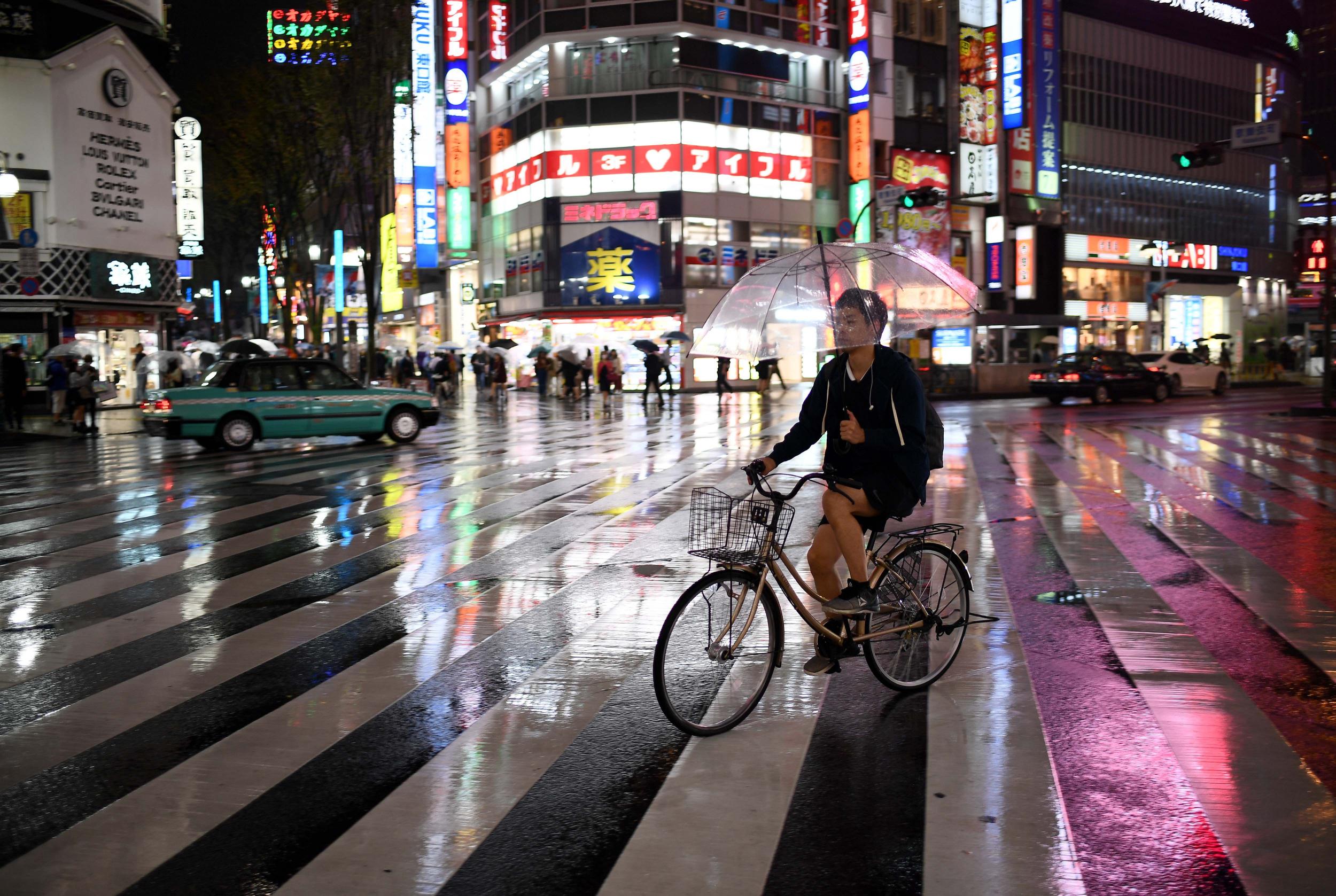Typhoon Hagibis latest: At least 11 dead after storm pummels country
Hagibis is strongest storm to hit in six decades and battered country’s main island with torrential rain and violent winds

Japan is waiting to count the costs of the destruction wrought by Typhoon Hagibis after the storm left at least 11 people dead and forced thousands to flee their homes.
Hagibis was the strongest storm to hit in six decades, and battered the country’s main island with torrential rain and violent winds.
It made landfall shortly before 7pm Japan Standard Time (10am GMT) in Izu Peninsula, southwest of Tokyo, though its influence was felt for much of Saturday as warnings of record downpours, flooding and landslides were issued throughout the southern regions of Honshu island.
By Sunday morning, at least 11 fatalities had been reported, with 11 people said to be missing, while at least 90 others had been injured.
Although seven million evacuation advisories were ordered along Honshu’s south coast, it’s reported that roughly 50,000 people took shelter in emergency centres.
Buildings in the Kansai region, home to cities such as Osaka and Kyoto, were also left damaged by floodwaters. Local videos and footage showed numerous rivers across the country which had burst their banks under the deluge of heavy rain.
Hundreds of thousands of homes across several prefectures were left without electricity by Saturday night, according to Tokyo Electric Power Company.
Although the worst of the storm had passed Japan’s central regions, including the Tokyo Greater Area, by midnight on Saturday, authorities were still warning residents of the risk to life through high river levels and flooding.
Japan’s Meteorological Agency (JMA) said that half a metre of rain could fall on Tokyo and the surrounding wards between Saturday and Sunday.
“Unprecedented heavy rain has been seen in cities, towns and villages for which the emergency warning was issued,” a spokesperson for the JMA said.
“The possibility is extremely high that disasters such as landslides and floods have already occurred. It is important to take action that can help save your lives.”
Prior to landfall, Hagibis was downgraded to “strong,” the JMA’s lowest level for typhoons just above “severe tropical storm”. Nonetheless, the storm generated winds of up to 140mph as it worked its way north along Japan’s east coast late into the night.
The country’s infrastructure was brought to a halt ahead of Hagibis’s arrival on Saturday.
Flights in and out of the country saw extensive disruption, with Tokyo’s two main airports subject to the most cancellations. All Nippon Airways and Japan Airlines collectively cancelled more than 1,000 flights scheduled for Saturday, both domestic and international. Multiple airports throughout the country, including those serving Tokyo, Osaka and Sendai, also cancelled flights.
Railway operators suspended service throughout the Tokyo region, as well as bullet train service between the capital and Osaka and between Osaka and Fukuoka, on the island of Kyushu. Trains are expected to resume running on Sunday morning.
Tokyo Disneyland was shut, its first weather-related closure since a snowstorm in 1984. The retail giant Seven & I Holdings said it would shut 124 outlets in the Tokyo area. Some 700 Lawsons convenience stores across the country also closed.

In Tokyo, where the streets had quietened and public transport services ground to a standstill by Saturday afternoon, Tannoy announcements were made across the city recommending residents to stay indoors.
Many department stores in and around the capital decided to halt trade for the day. Evacuations were also ordered in Kawasaki, one of the main districts forming the Greater Tokyo Area.
But as a city used to typhoons and built to withstand their effects, central Tokyo was fully prepared for the storm, with its effects eventually subsiding one hour before midnight.
George Beadle, a visiting England rugby fan, said on Saturday morning he was struck by the initial sense of calm within the capital. “Even this morning in torrential rain the supermarkets and shops are still open with people cycling down the road,” he said from his accommodation in Shinjuku. “The only difference seems to be a shortage of water and breads in the supermarkets.”
Justin Moyse, who has spent the last seven years living in Tokyo, admitted it was rare for the city to find itself in the path of such a major storm.
“In Tokyo the Japanese are very vigilant about these kind of natural disasters,” he said. “They are actually quite proactive and wary. It is rare for such a powerful typhoon to come straight through Tokyo.
“Even in Tokyo winds this strong can cause damage to windows and cars.”
The greatest level of destruction was expected away from the central cities and storm-proof areas. The Chiba Prefecture, which lies to the east of Tokyo, remains particularly vulnerable, having yet to fully recover from the effects of Faxai which damaged buildings and left 900,000 people without power.
Earlier on Saturday morning the region was subject to a tornado, with one man killed after his car was flipped in high winds.
Some supermarkets had ran out of bottled water and batteries by Friday afternoon, after officials advised residents in the area to prepare supplies for up to three days.
Typhoon Hagibis, which means “speed” in the Philippine language Tagalog, also forced the cancellation of two matches at the Rugby World Cup – England’s clash with France and New Zealand’s encounter against Italy – while the Pool A decider between Japan and Scotland remains on red alert.
Join our commenting forum
Join thought-provoking conversations, follow other Independent readers and see their replies
Comments